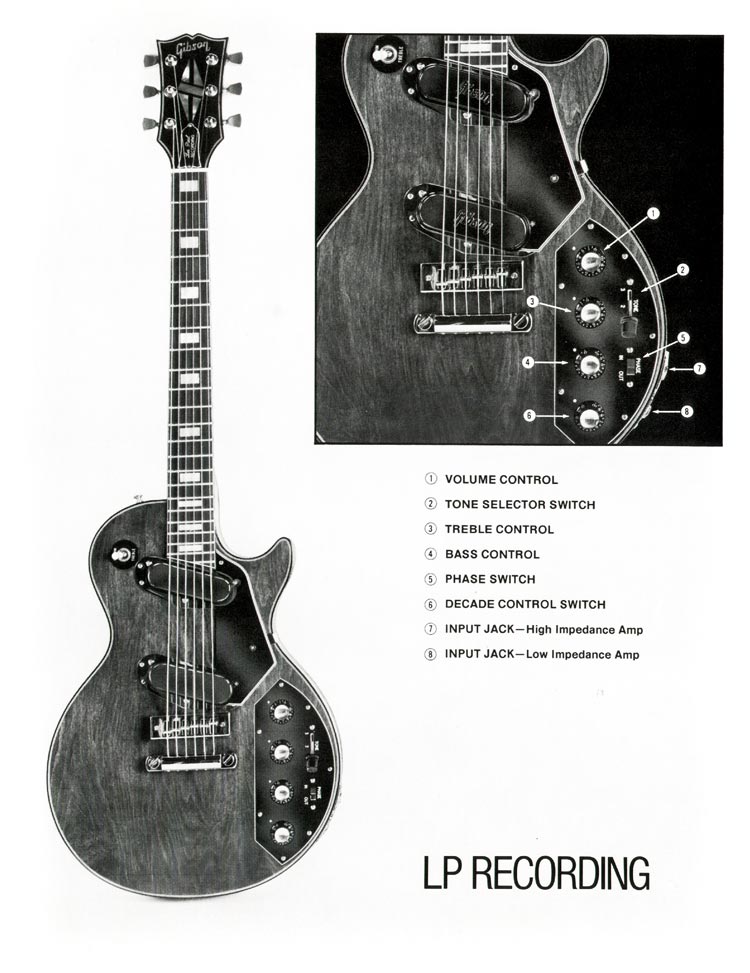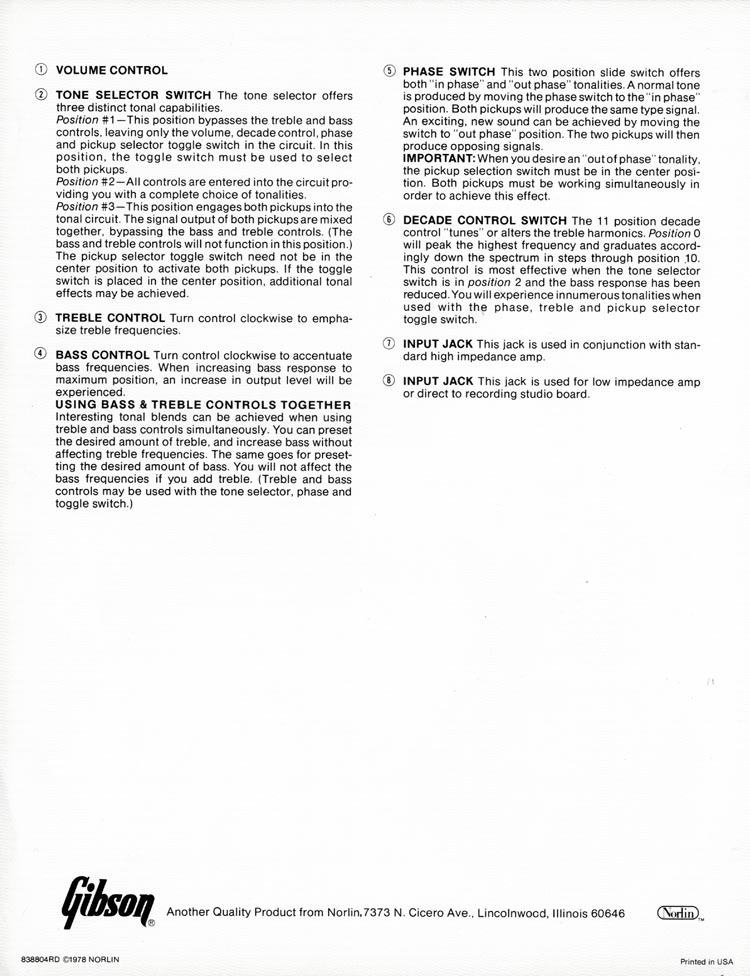
Gibson first launched the Les Paul Recording guitar in 1971, as a revised version of the Les Paul Professional. These guitars were fitted with special low impedance pickups, for an improved frequency response, and minimised signal degradation with longer cables. The numerous controls naturally required some explanation, and both of these models were accompanied by booklets explaining their workings - see these owners manuals - 1969 Personal / Professional and 1971 Recording. The prime difference, electronically speaking, was not the tonal controls, rather the low impedance output: in 1969 only a low impedance output was fitted; high impedance operation required a transformer cable. In 1971, this transformer was built into the guitar, with a hi/lo switch mounted onto the control plate.
But in 1976, this switch was again removed, with the output jack on the control plate replaced by two jacks (one high, one low impedance) positioned on the guitar's edge.
Furthermore, the controls themselves, although not functionally modified, were reorganised on the control plate. The four potentiometers: volume, treble, bass and decade were placed in a straight row above the phase and tone switch, both now oriented horizontally. The pickup selector switch was moved to the top body bout, the typical location for this switch on all Les Paul guitars.
In 1978 Gibson published a number of flyers explaining the operation of some of their guitars with more complicated circuitry, with the two-sided sheet below explaining the operation of the second version of the Les Paul Recording guitar.

One other change, in this second version of the LP Recording, was the numbering of the tone switch - settings 1 and 3 reversed from their function in the previous incarnation. The actual workings of this control is otherwise unchanged.

$5500
$4695
$4495
$2919
$2350
$195
€3750
£102